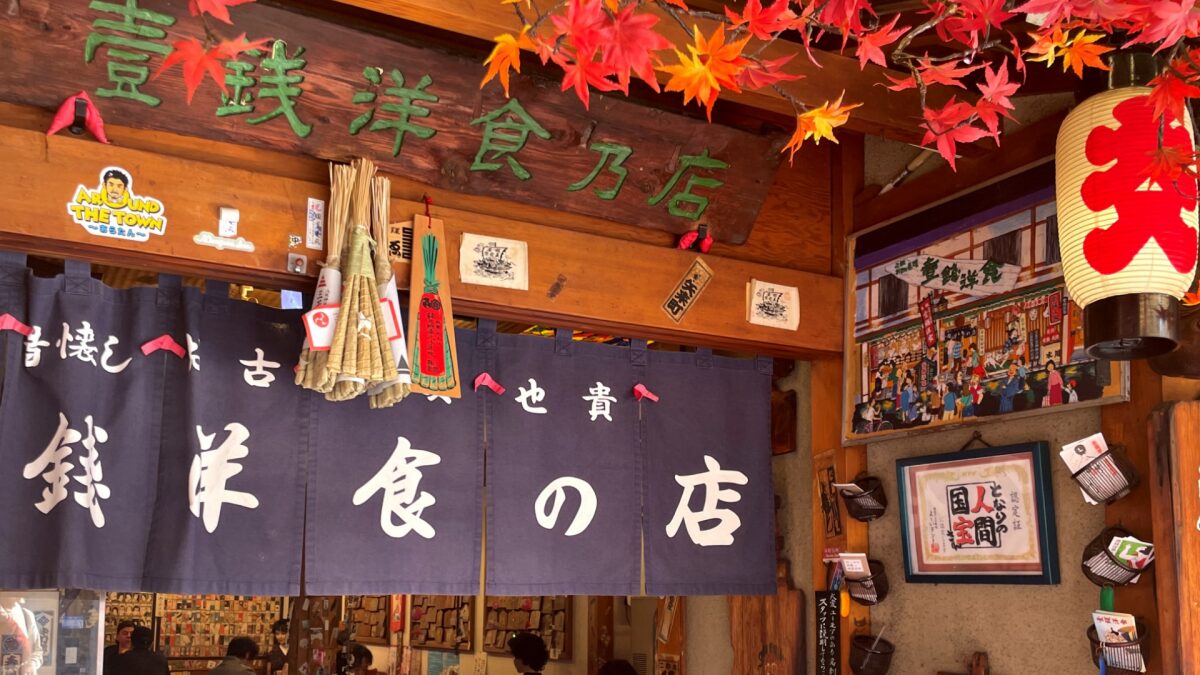Language:Japannese
Do you know the food called “Issenyoushoku”?
This time, we would like to introduce you to Issen Yoshoku, located in Gion (Shijo Nawate), one of Kyoto’s most representative downtown areas.
This is a store modeled after the Taisho and Showa eras, and you can enjoy food similar to the very delicious “Negiyaki?”
This shop is similar to Odaiba Haikara Yokocho in Kanto.
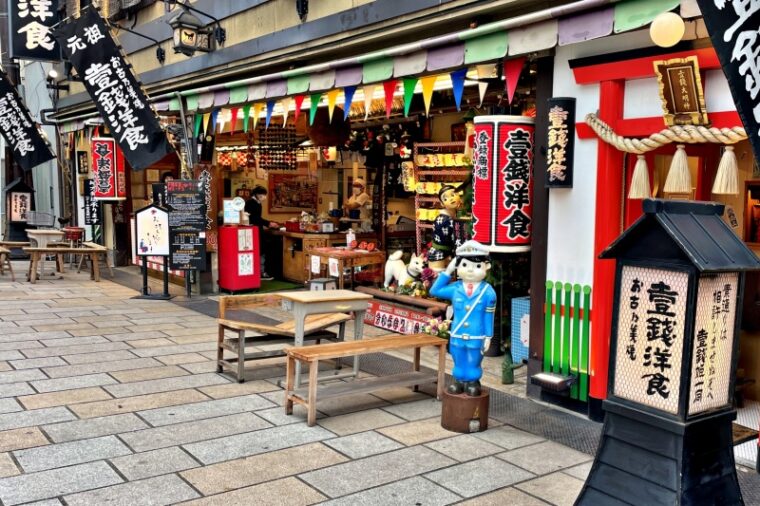
It is said that “Issen Yoshoku” got its name from the fact that it was a crepe-like food made from flour that was sold for 1 sen each.
The restaurant’s “Iksen Yoshoku” is a modern take on this, and can be described as “Kyoto-style green onion grill.”
Now, let’s introduce the history of “Iksen Yoshoku” in order!
“Issen Yoshoku” shop that recreates the Taisho and Showa eras
“Issen Yoshoku” originally had a store on the north side of the Shirakawa River flowing through Gion Shinbashi, but I remember that it moved to Shijo Nawate about 30 years ago and became the store it is today.
The Gion Shinbashi area is designated as a traditional architecture preservation district, so the stores at the time were not as flashy as they are now, and were built in the style of a Kyomachiya.
It was a simple shop with no flashy decorations like it does today, just a red lantern with the words “Issen Yoshoku” hanging on it.
At that time, the interior of the store was simple, but the atmosphere was reminiscent of the early Showa era with the “Jokyu-san” mannequins and the “Senjafuda” and “Hanameishi” posted on the walls and pillars.
It’s a shame that I can’t show you photos of what it was like back then, but the following is a picture of Gion Shinbashi, where the Ichisen Yoshoku restaurant was located.
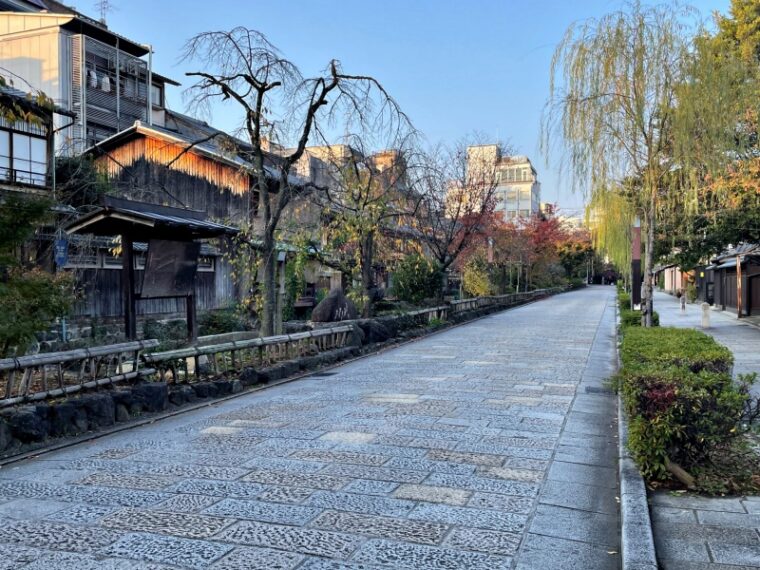
There was a “Iksen Yoshoku” shop next to this road.
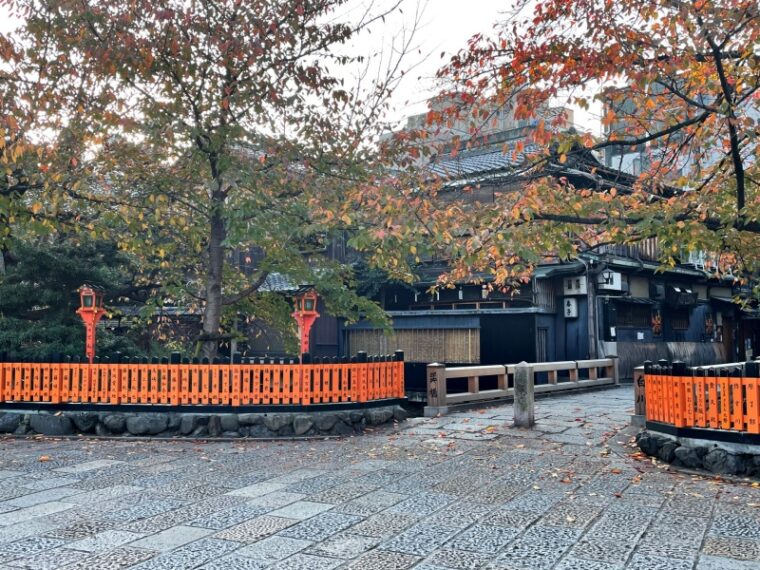
Tatsumi Bridge (Kiridoshi), a famous filming location.
Issen Yoshoku main store in Shijo Nawate
The current appearance of “Issen Yoshoku” makes it stand out even in Gion, Kyoto. Some foreign tourists seem to think of it as a theme park, and I’ve been asked, “What is that strange store?”
When I asked the staff, they told me that on weekdays during the day, about half of the customers are foreign tourists, and they also have menus in English and Chinese.
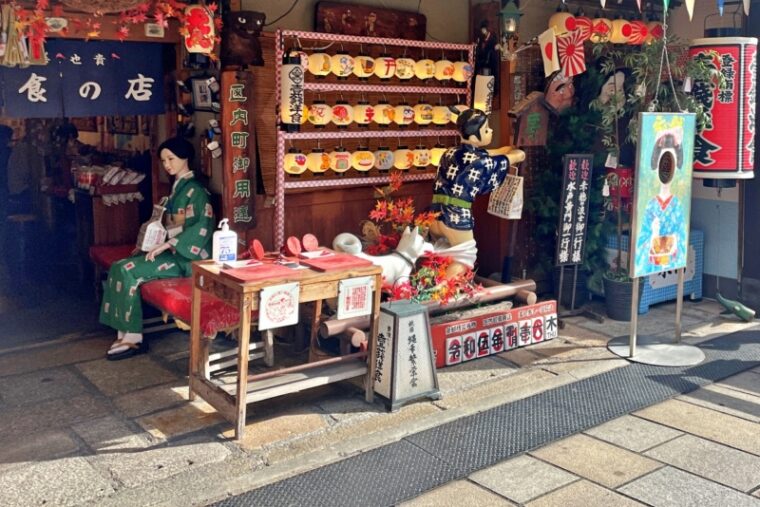
Inside the store, Astro Boy, Pochibukuro, and Shunga votive tablets are displayed all over the walls, giving it a feel of the Showa era in Japan.
It feels strange because there is a mannequin of “Jokyu-san” sitting at the table that was also in the old store. This mannequin seems to have a name, with a name tag hanging from its neck that reads “Yukie Nakama” and “Hitomi Kuroki.”
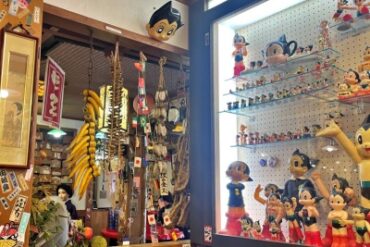
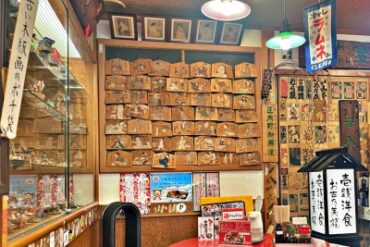
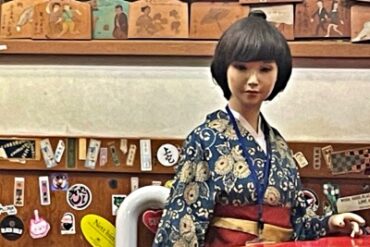
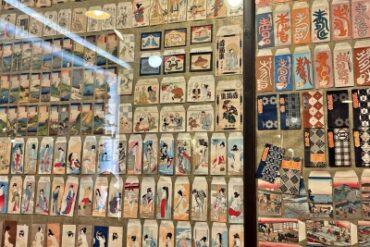
Business card of a store that has not changed since ancient times

These business cards are “Issen Yoshoku” business cards designed at the time of the Shirakawa store in Gion Shinbashi, and are still in use today. It made me feel nostalgic, so I brought it home and showed it to his wife, who laughed at me.

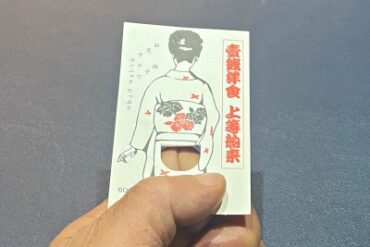
At first glance, it may seem like a boring “sexy play” business card, but in the days before karaoke, conversation was the lifeblood of bars, so props like this were useful in a variety of ways.
The great thing about this business card is that it has the effect of attracting customers’ attention and encouraging them to order over the phone.
Was the person who came up with this design a marketing professional? Or was he only half joking?
I don’t know much about it, but at the time it must have been a business card used to promote lean sales.
“Issen Yoshoku” on the main menu
Although it is called the main menu of this restaurant, the only food is “Issen Yoshoku”. The only other items available are sweets and drinks called “Matcha Anmitsu Jelly”.
All you can choose is whether you want the sauce to be sweet or spicy. Normally, the inside is coated with hot sauce and the outside is covered with sweet sauce.
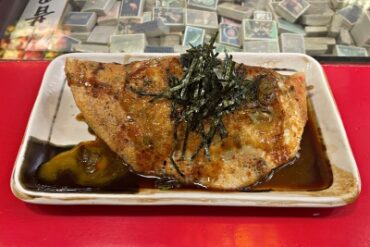
Exterior view of “Issen Yoshoku”
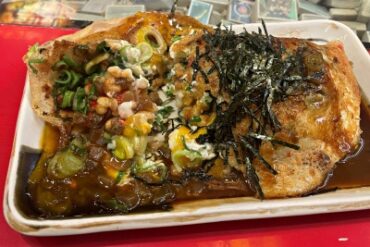
Look inside “Iksen Yoshoku ”
In the past, there was a soy sauce flavor, but now it seems like only the sauce flavor is available. If you make a special order, you may be able to accommodate it, but this time I chose the normal sauce flavor.
How “Issen Yoshoku” is made
The following ingredients are included in “Issen Yoshoku”

This menu says “all together!” and “Only one dish.”
It is written in English that is unique to Japanese that it says that everything is included, but what does it mean to say “vegetarian ok” when it contains eggs, domestic Wagyu beef, sakura shrimp, bamboo shoots, etc.?
I’m not a vegetarian so it doesn’t bother me, but I’m curious if this notation is okay.
Aside from that, the restaurant’s website shows how to make “Issen Yoshoku” but this is actually how it is baked.
Issen Yoshoku is grilled to the perfect temperature and is crispy on the outside and soft on the inside.
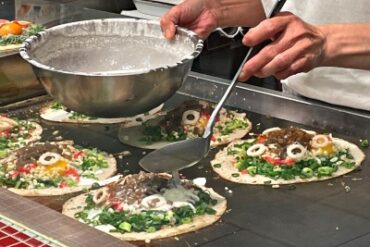
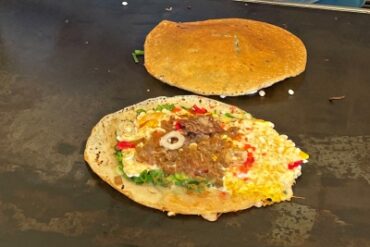
It looks easy at first glance, but when you actually make it, it doesn’t turn out like this. Even though I was taught how to bake by my predecessor, the success rate at home is only about 50%, so I have given up trying to make it.

This is a take-home “Issen Yoshoku,” which I bought as a souvenir for my family today.
History of Issen Yoshoku
According to my father, who was born in the single digits of the Showa era, it was a “snack” made by mixing Meriken flour (today’s wheat flour) with water and baking it on a griddle, with only soy sauce seasoning.
Of course, it didn’t contain any toppings, so it was probably a crepe made with Meriken flour and coated with soy sauce. I don’t think it would be tasty at all.
It is said that when you paid 1 yen, it was folded into two or three pieces and wrapped in newspaper before being handed to you, so I think there was a hygiene issue as well.
When I was a child, it was called “betayaki,” and it was a flour-based dough with no dashi stock and the only ingredient was “green onions,” but the sauce was seasoned with flour, bonito, and green seaweed.
I think this evolved into “negiyaki” and later developed into okonomiyaki.
Access

